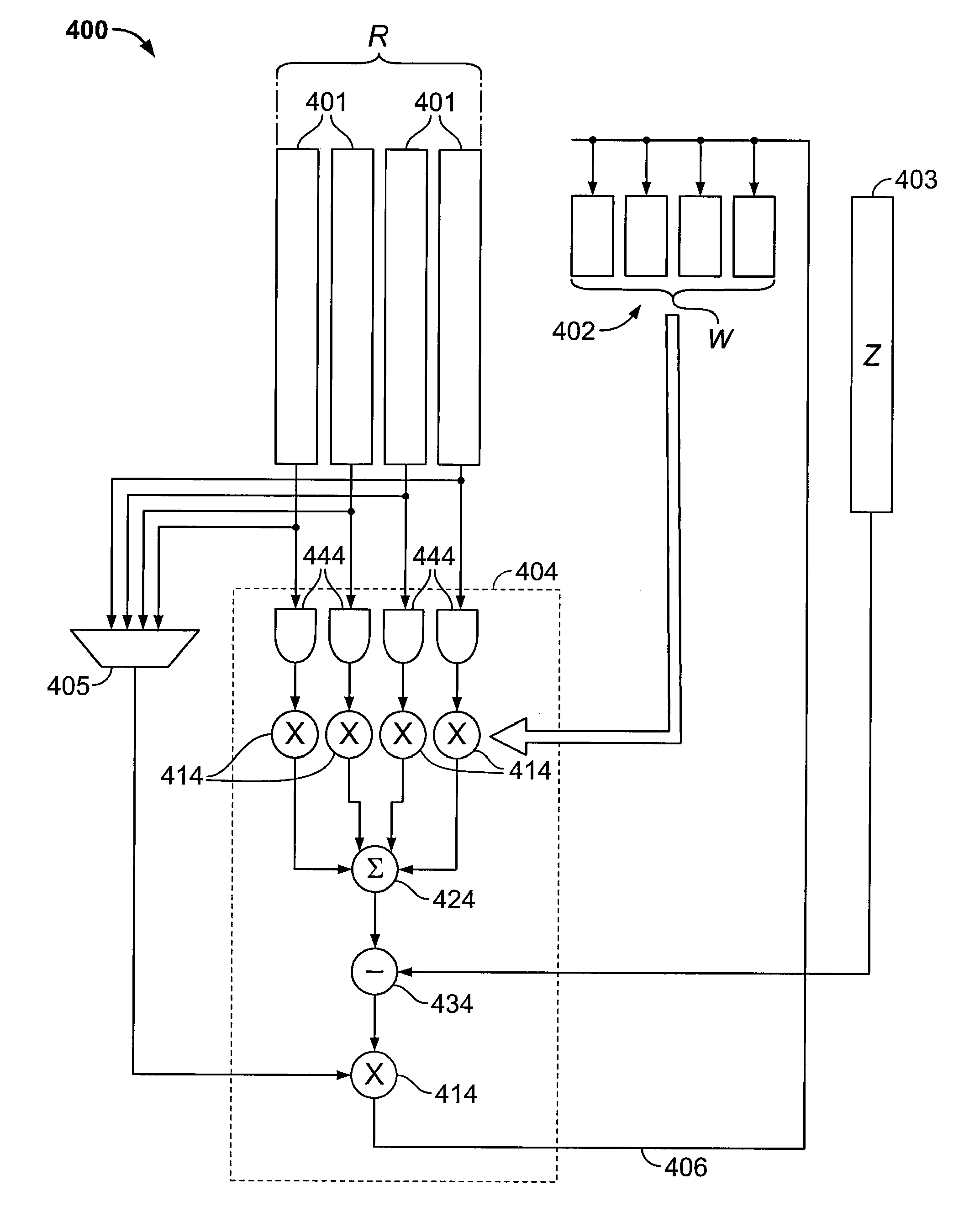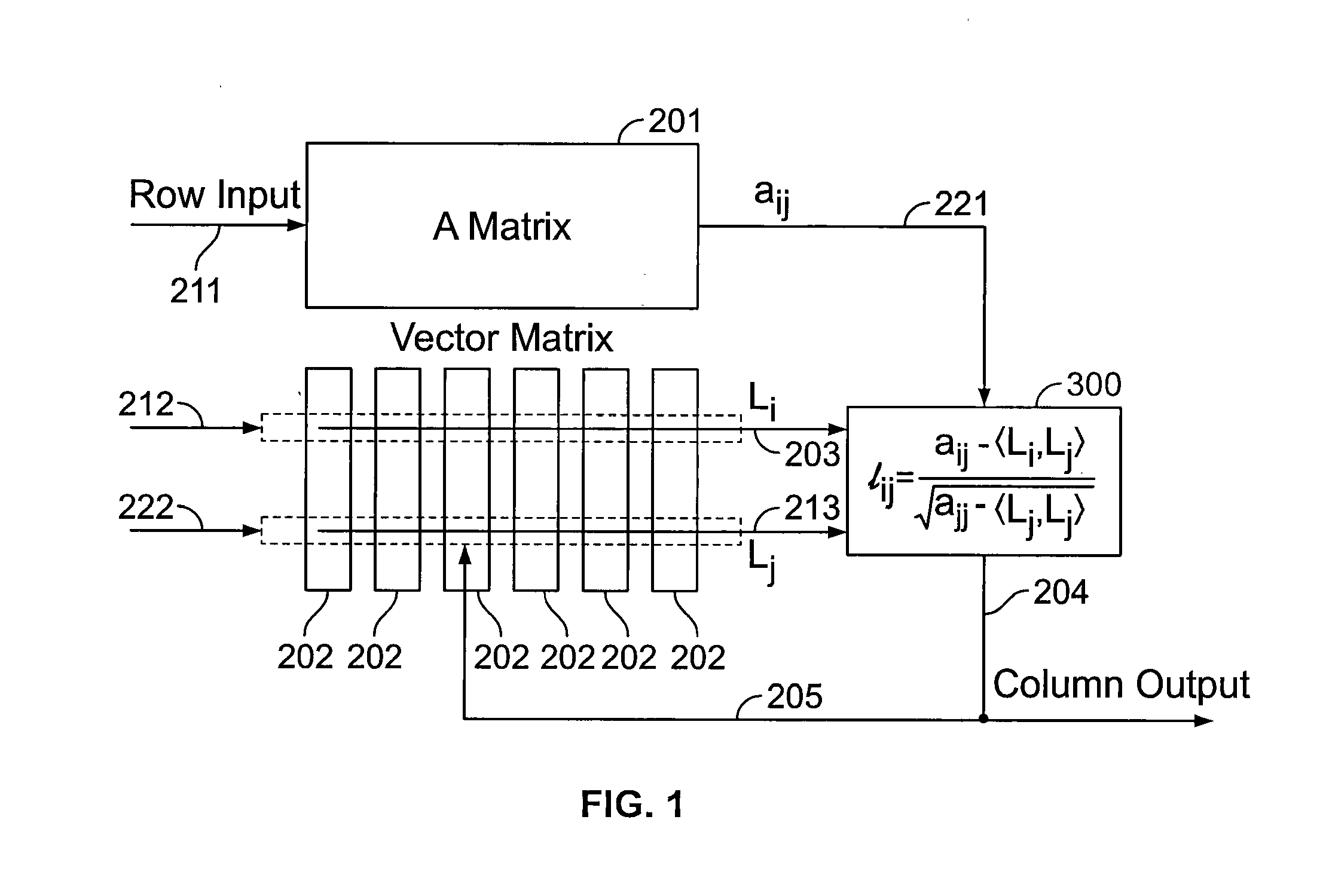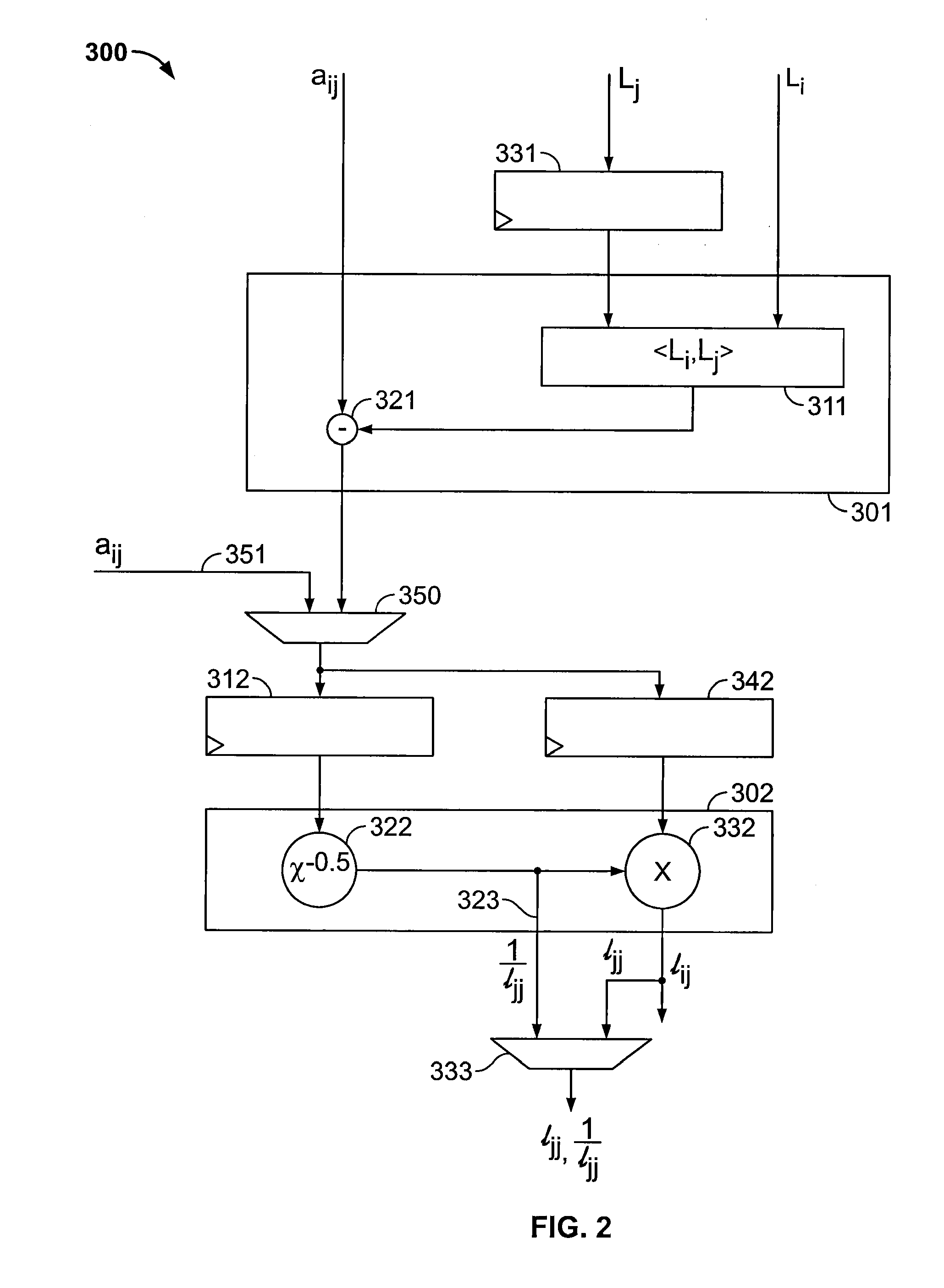Solving linear matrices in an integrated circuit device
a technology of linear matrices and integrated circuits, applied in the field of linear matrices in integrated circuit devices, can solve the problems that the remainder of the datapath combined may consume as much resources as the implementation of a divide operation in circuitry, and achieve the effects of reducing resource consumption, reducing latency, and increasing latency in division circuitry
- Summary
- Abstract
- Description
- Claims
- Application Information
AI Technical Summary
Benefits of technology
Problems solved by technology
Method used
Image
Examples
Embodiment Construction
[0019]Taking an example of lower triangular matrix l of dimensions 6×6, the elements on the diagonal are l11, . . . , l66. In each jth column, the elements under ljj are lij, i=j+1, . . . , imax (in this case, imax=6). The matrix may be considered to be empty above the diagonal, or the elements above the diagonal may be considered to be zeroes.
[0020]Each element lij can be calculated using two datapaths. The first datapath calculates the following result:
lx=ax−Lx,Lx
where for l and a, x=ij; for the L vectors, x=i or j, respectively; and Lx,Lx denotes the inner product of the L vectors.
[0021]The first output (x=jj) of the first datapath is latched at the input of a second datapath, which calculates the actual lij. The first element of the column (ljj) is calculated as the inverse square root of the input (ajj−Lj,Lj), multiplied by the input, generating the square root of the input. The inverse square root is used instead of a direct square root calculation, because it can be reused fo...
PUM
 Login to View More
Login to View More Abstract
Description
Claims
Application Information
 Login to View More
Login to View More - R&D
- Intellectual Property
- Life Sciences
- Materials
- Tech Scout
- Unparalleled Data Quality
- Higher Quality Content
- 60% Fewer Hallucinations
Browse by: Latest US Patents, China's latest patents, Technical Efficacy Thesaurus, Application Domain, Technology Topic, Popular Technical Reports.
© 2025 PatSnap. All rights reserved.Legal|Privacy policy|Modern Slavery Act Transparency Statement|Sitemap|About US| Contact US: help@patsnap.com



